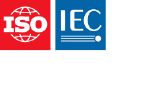Abstract
ISO/IEC 14496-20:2008 defines a scene description format (LASeR) and an aggregation format (SAF) respectively suitable for representing and delivering rich-media services to resource-constrained devices such as mobile phones.
LASeR aims at fulfilling all the requirements of rich-media services at the scene description level. LASeR supports:
- an optimized set of objects inherited from SVG to describe rich-media scenes,
- a small set of key compatible extensions over SVG,
- the ability to encode and transmit a LASeR stream and then reconstruct SVG content,
- dynamic updating of the scene to achieve a reactive, smooth and continuous service,
- simple yet efficient compression to improve delivery and parsing times, as well as storage size, one of the design goals being to allow both for a direct implementation of the SDL as documented, as well as for a decoder compliant with ISO/IEC 23001-1 to decode the LASeR bitstream,
- an efficient interface with audio and visual streams with frame-accurate synchronization,
- use of any font format, including the OpenType industry standard, and
- easy conversion from other popular rich-media formats in order to leverage existing content and developer communities.
Technology selection criteria for LASeR included compression efficiency, but also code and memory footprint and performance. Other aims included: scalability, adaptability to the user context, extensibility of the format, ability to define small profiles, feasibility of a J2ME implementation, error resilience and safety of implementations.
SAF aims at fulfilling all the requirements of rich-media services at the interface between media/scene description and existing transport protocols:
- simple aggregation of any type of stream,
- signaling of MPEG and non-MPEG streams,
- optimized packet headers for bandwidth-limited networks,
- easy mapping to popular streaming formats,
- cache management capability, and
- extensibility.
SAF has been designed to complement LASeR for simple, interactive services, bringing:
- efficient and dynamic packaging to cope with high latency networks,
- media interleaving, and
- synchronization support with a very low overhead.
ISO/IEC 14496-20:2008 defines the usage of SAF for LASeR content; however, LASeR can be used independently from SAF.
General information
-
Status: PublishedPublication date: 2008-12Stage: Close of review [90.60]
-
Edition: 2Number of pages: 167
-
Technical Committee :ISO/IEC JTC 1/SC 29ICS :35.040.40
- RSS updates
Amendments
Amendments are issued when it is found that new material may need to be added to an existing standardization document. They may also include editorial or technical corrections to be applied to the existing document.
Life cycle
-
Previously
WithdrawnISO/IEC 14496-20:2006
WithdrawnISO/IEC 14496-20:2006/Amd 1:2008
WithdrawnISO/IEC 14496-20:2006/Cor 1:2007
WithdrawnISO/IEC 14496-20:2006/Cor 2:2008
-
Now
-
00
Preliminary
-
10
Proposal
-
20
Preparatory
-
30
Committee
-
40
Enquiry
-
50
Approval
-
60
Publication
-
90
Review
-
95
Withdrawal
Corrigenda
Correct the current edition; free; not included in the text of the existing standard.PublishedISO/IEC 14496-20:2008/Cor 1:2010
Amendments
Provide additional content; available for purchase; not included in the text of the existing standard.PublishedISO/IEC 14496-20:2008/Amd 1:2009
PublishedISO/IEC 14496-20:2008/Amd 2:2010
PublishedISO/IEC 14496-20:2008/Amd 3:2010
-
00

